|
|
|
| Subscriptions click here for 20% off! | E-Mail: info@rangemagazine.com |
|
|
|||||||||||
| THEN & NOW Renewal on the Western Range Mother Nature’s balance is not always harmonious. By J. Wayne Burkhardt, Ph.D. |
|||||||||||
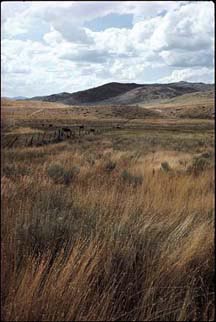 |
|||||||||||
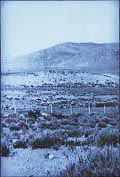 |
|||||||||||
| LEFT: Trigarro Dip Springs, Mountain City, Aug. 19, 1981. RIGHT: Same place, August 1919. | |||||||||||
| For centuries, the ranges of the American West have been through
many natural cycles. Before European settlement, they were overgrazed,
undergrazed, dried out, flooded and burned. And even though flora
and fauna can flourish together in natural grazing systems, Mother
Nature’s balance is not always harmonious. The history of grazing throughout the world has been one of extremes. Fauna populations built up when ranges had a surplus of feed and the slowly increasing flocks or herds would overgraze until all forage was depleted. Then they would starve to death and the process would start all over again. The plant community and soils would begin to recover, sometimes with different flora, which would encourage a different grazing species. Antelope prefer grassy meadows, mule deer like to browse, while sheep like forbs or broad leaf plants in the high country. When this country was settled, the whole operating philosophy was to multiply and subdue and conquer the West. It was a free-for-all, settled by the tough. There was no system to secure the use of public domain so timid souls lost out while the aggressive and ruthless survived. Significant rangeland grazing started about 1860 with the advent of the transcontinental railroad, the containment of buffalo, and treaties with Native Americans. By the mid-1880s the western range was filled with livestock and even though some brutal winters and agonizing droughts caused massive die-offs, there is little doubt that by the early part of the 20th century the range was overstocked and overgrazed. In 1905, Teddy Roosevelt created the Forest Reserves (later to become the U.S. Forest Service) which offered protection for higher elevations. Then in 1934, Congress passed the Taylor Grazing Act (later to become the Bureau of Land Management), creating a service agency to deal with the remaining public domain and establishing a permit system for allocating, securing and regulating grazing use on the public lands. Soon after that, grazing pressure was reduced by more than 50 percent. (Note: Grazing pressure is measured in terms of an Animal Unit Month. One 800-1,000-lb. cow counts as one AUM, five deer or sheep would equal one range cow or one AUM. There were 50 million AUMs in 1900, and there are less than 20 million today.) Grazing of rangelands is a natural process, fundamental, ecologically and biologically sound. It is at the base of the world’s food chain, and probably the only natural food production technology in this country. All the rest are intensive, artificial, buoyed up by fossil energy, fertilizer, pesticides and fuel. Grazing is extensive, low fossil energy consumptive, a natural process with renewable grass and forage being eaten by animals to produce protein that becomes a food for something else. The western range is a herbivory system. Horses, camels, giant bison, and antelope-like grazers and browsers roamed the continent prior to becoming extinct. They were followed by buffalo, elk, deer, antelope, wild sheep, and goats, which, several hundred years ago, were joined by livestock. In earlier times, grazing had no seasons; it was continuous. Today livestock use, because of better land management practices, generally occurs under some form of rotation system with shorter grazing seasons and periodic intervals of rest. The effects of these changes are positive and apparent. Unfortunately, many government reports and stories in the environmental press present an inappropriately bleak and critical assessment of the well-being of the public domain. In the 1980s, environmentalists, citing land degradation and lack of significant contribution to society, launched a serious political campaign against livestock grazing on public lands which put it at the center of a major land use struggle. This puts the future of rangeland grazing in question. Sadly, their propaganda does not include many facts and is much at odds with documentation showing stable and improving range conditions. Evidence of improvement comes from the land itself. Photographic records from the turn of the century compared to photos of current situations show tremendous improvement in the health and condition of grazed public lands in the West. Near barren range landscapes and gutted stream courses of the early 1900s are today proven and productive stable rangelands. The desirable native species of grasses, forbs and shrubs which occupy these rangelands today are many times more productive of |
|||||||||||
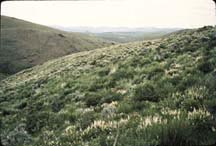 |
|||||||||||
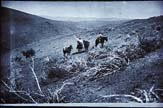 |
|||||||||||
| TOP LEFT: Martin Creek, Santa Rosas, June 24, 1982. TOP RIGHT:
Same place, summer 1920. BOTTOM LEFT: Willis Creek, Koontz Ranch, June 20, 1982. BOTTOM RIGHT: Same place, May 25, 1911. |
|||||||||||
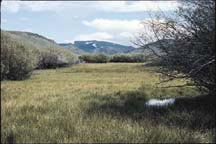 |
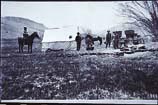 |
||||||||||
|
wildlife habitat, soil stability and livestock forage than conditions
shown in the earlier pictures. And the records are by no means
isolated occurrences. J. Wayne Burkhardt, Ph.D., is associate professor emeritus of range management at the University of Nevada, Reno. He has been studying western rangelands for more than 35 years. He and his wife Julie Briggs, a resource specialist, operate Ranges West Consulting from their home in Indian Valley, Idaho. This story is reprinted from RANGE, Spring 1991. |
|||||||||||
|
To Subscribe: Please click here for subscription or call 1-800-RANGE-4-U for a special web price Copyright © 1998-2005 RANGE magazine last page update: 04.03.05 |
|||||||||||
